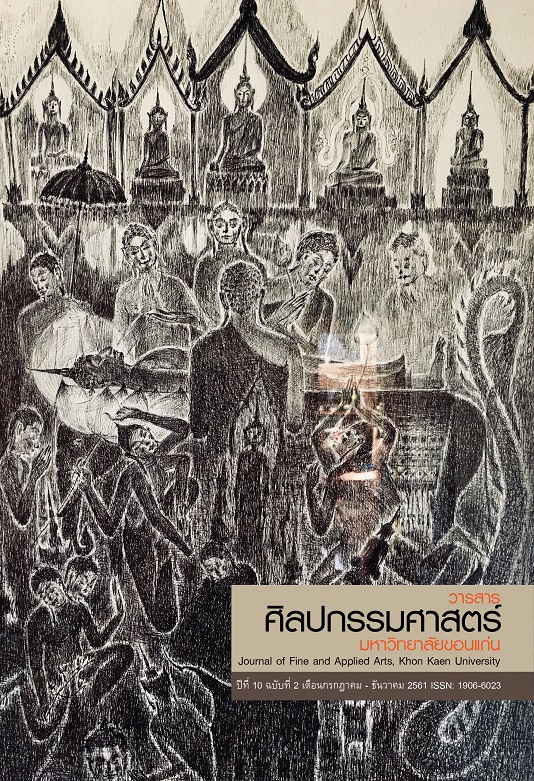The Social Circus Theatre of the Pang Daeng Nok Youth: the Applied Theatre Process of Shaping the Identity of the Dara-ang Youth in the Pang Daeng Nok Community in Chiangdao District, Chiangmai Province
Main Article Content
Abstract
The youth in the Pang Daeng Nok community, Chiangdao district, migrated from Myanmar. They have been facing with issues of socio-cultural stigmatization due to having no legal status, and external development pressure, which is mechanization since 2010. The youth in Pang Daeng Nok are not allowed to go outside the village since they have no legal status. This paper is a research about how the Social Circus Theatre and the applied theatre process of Makhampom theatre (from 2013-2017) has empowered together with shaping the identity of the youth in the Pang Daeng Nok community. Applied Theatre is a multi-dimensional learning process and a human development. The youth learns about one-self and uses conflicts and issues in the community to create a performance piece in order to perform in a community and for people outside the community. The outcome of this process is to make the youth themselves question about the socio-cultural stigmatization of their ethnic group together with de-marginalize them from getting caught in the ethnicity bias and stereotype of being a stateless person in Thai society.
Article Details
Content and information in articles published in the Journal of Fine and Applied Arts of Khon Kaen University is regarded as the opinion and sole responsibility of the author(s) directly; therefore, editors are not obliged to agree to or share any responsibility with regard to the content and information that appears within these articles.
All articles, information, content, image, etc. that have been published in the Journal of Fine and Applied Arts of Khon Kaen University is the copyright of the Journal of Fine and Appllied Arts of Khon Kaen University. Any person or organization who wishes to distribute all or parts of the articles for further dissemination or other usage must first receive permission from the Journal of Fine and Applied Arts of Khon Kaen University before proceeding to do so.
References
Berger, Peter L. and Thomas Luckmann. (1989). The Social Construction of Reality: A Treatise in the Sociology of Knowledge. New Your: Anchor Books.
Boehm, Amnon. and Ester Boehm. (2003). Community Theatre as a Means of Empowerment in Social Work: a Case Study of Women’s Community Theatre. In Journal of Social Work, 3(3), 283-300. London: Sage Publications.
Makhampom. (n.d.). Creative Drama. Bangkok: Makhampom.
Makhampom, (2011). Dreaming in the Fire: Conflict, Peace, Theatre, Dialogue. In San Sewana: People’s Theatre, Cross Cultural and Transformation. Chiangmai: Makhampom.
Pleumjit, Kittirat. (n.d.). Evaluation Paper for Transformative Theatre. (n.p.) (a Report summited for the Health Promotion Foundation as part of the Transformative Theatre Project)
Prenki, Tim. (2009). Introduction to Intervention. In Tim Prenki and Sheila. The Applied Theatre Reader. England: Routledge.
Prentki, Tim. (2015). Applied Theatre: Development. London: Bloomsbery.
Thai Krisdika on Thai Nationality act 1965. (April 4, 2012). http://web.krisdika.go.th/data/law/law2/%CA25/%CA25-20-2535-a0001.htm.


